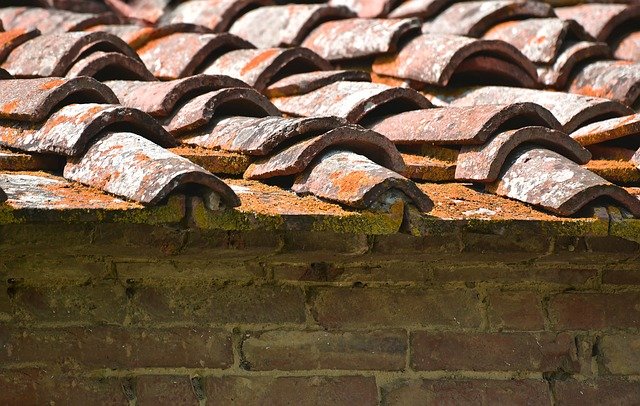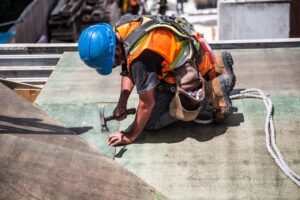
A leaky roof can be a homeowner’s nightmare, leading to a cascade of problems from water damage to compromised structural integrity. Detecting and addressing roof leaks promptly is crucial for preventing more extensive and costly issues. This comprehensive guide will explore the various methods to effectively detect roof leaks and discuss practical steps to address them. From identifying common signs of roof leaks to DIY inspection techniques and professional solutions, this article aims to empower homeowners with the knowledge needed to safeguard their homes against the damaging effects of water intrusion.
Professional Roof Leak Detection Methods
Professional roofers often use infrared technology to detect hidden roof leaks. Infrared scans can identify temperature differentials caused by water infiltration, helping pinpoint the exact location of leaks. Moisture meters are devices that measure the moisture content in roofing materials. Roofing professionals use these tools to identify areas with higher moisture levels, indicating potential leaks. In some cases, core sampling may be necessary to assess the roof’s condition. This involves taking small samples from various areas to analyze the layers and identify issues such as trapped moisture or degraded materials. Search for professional roofers in your region by exploring the internet to find their website, and click here to contact them. You can schedule a roof inspection to employ these advanced detection methods. These techniques go beyond what the average homeowner can accomplish, offering a more comprehensive and accurate assessment of your roof’s condition.
Recognizing Signs of Roof Leaks
One of the most apparent signs of a roof leak is the presence of water stains on ceilings and walls. These stains often appear as discolored patches or streaks and indicate water seeping through the roof. During rainstorms, the sound of dripping water inside your home can clearly show a roof leak. This is especially noticeable in attics or top-floor rooms and should be addressed promptly to prevent further damage. Excessive moisture from roof leaks creates an ideal mold and mildew growth environment. If you notice these unwelcome guests in your home, it’s crucial to investigate and address the moisture source promptly. Water infiltration can cause paint on ceilings or walls to bubble or sag. This occurs when water accumulates behind the paint surface, signaling an underlying issue with the roof.
DIY Roof Leak Inspection Techniques
Start your roof leak detection process in the attic. Check for signs of water stains, mold, or mildew. Conduct a visual inspection of your roof’s exterior. Look for damaged or lost shingles, cracked flashing around chimneys or vents, and any signs of wear and tear. Binoculars can be helpful for a closer look without the need to climb onto the roof. Inspect areas where various components penetrate the ceiling, such as vents, chimneys, and skylights. Damaged flashing around these penetrations is a common source of leaks and should be addressed promptly. Regularly clean and inspect gutters, ensuring they are securely attached and debris-free.
Addressing Roof Leaks – DIY Solutions
For small leaks, temporary patches can be applied using roofing cement or sealant. This is a quick fix to prevent immediate water infiltration, but following up with a more permanent solution is essential. If the source of the leak is damaged or missing shingles, replacing them is a straightforward DIY solution. Use matching shingles and follow proper installation techniques to ensure a watertight seal. Roof sealant can be an effective solution for addressing minor issues like cracks or gaps around flashing. Ensure the surface is clean and dry before applying the sealant.
Preventative Maintenance for Roof Leak Prevention
Schedule regular roof inspections, especially after severe weather events. A proactive approach allows you to detect and address potential issues before they escalate. Regularly clean and maintain gutters to prevent water backup and roof damage. This simple task can go a long way in preventing leaks. Overhanging branches can damage roofing materials and provide a pathway for pests. Trim branches to avoid physical damage and ensure adequate sunlight and ventilation. Proper attic ventilation helps regulate temperature and moisture levels, reducing the risk of mold, mildew, and roof damage. Ensure vents are unblocked and functioning correctly.

Effectively detecting and addressing roof leaks is essential for the longevity and integrity of your home. By familiarizing yourself with the signs of roof leaks, conducting regular inspections, and taking prompt action, you can mitigate potential damage and save on costly repairs. Whether opting for DIY solutions or seeking professional assistance, the key is to address roof leaks promptly and thoroughly. With the knowledge and proactive measures outlined in this guide, homeowners can enjoy peace of mind, knowing they are actively protecting their homes from the detrimental effects of water intrusion.




